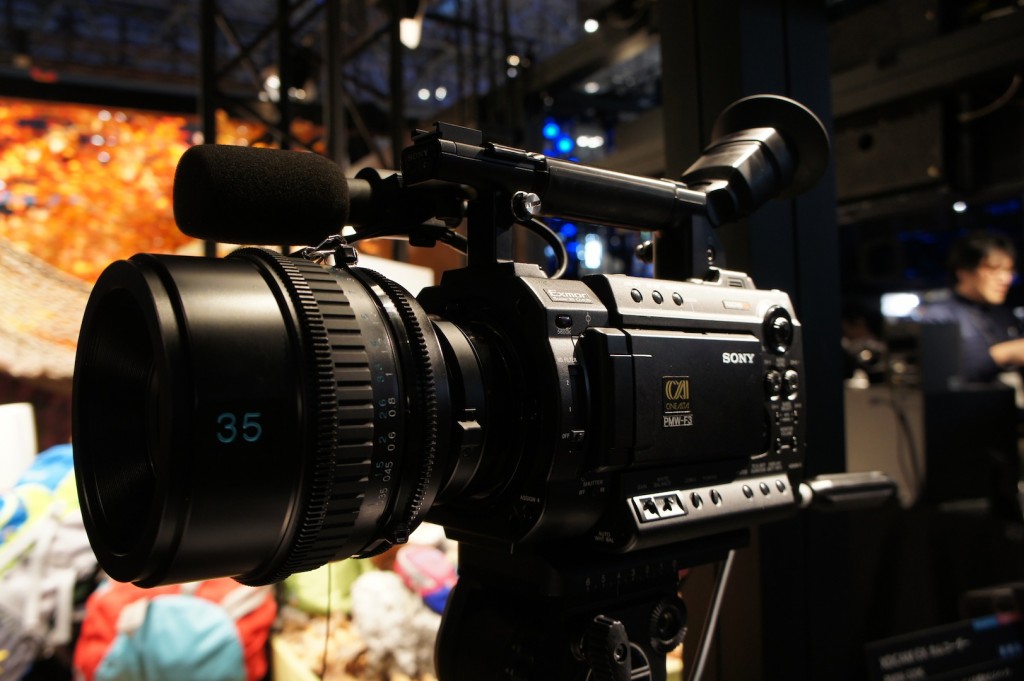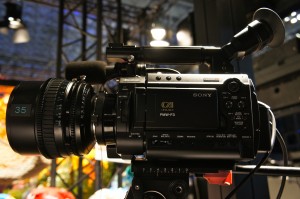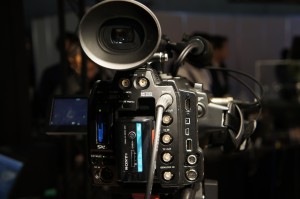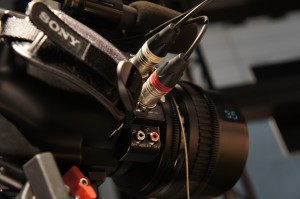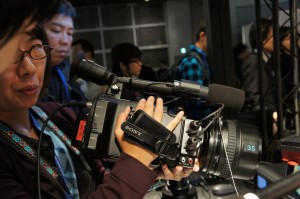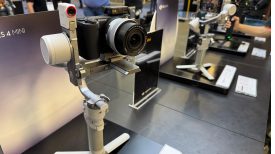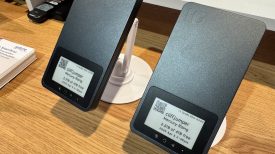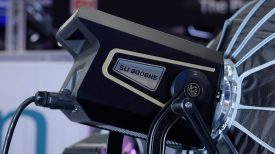Sony’s recently announced PMW-F3 has come with a lot of fanfare and an equal amount of criticism. A lot of people, particularly on DSLR websites, have complained about the price of this new Super 35mm sensor camera (it has roughly the same size sensor as a Red One). But this camera is not for the hobbyist or amateur: this is a professional camera aimed at professionals. The camera will retail for US$16,000 for the body alone or $23,000 with three F3 mount prime lenses (35, 50 and 85mm).
Is this too expensive? Well, yes and no. The camera is basically in this price range because of the large sensor, F3 mount and PL mount adapter as well as the number of high-end recording options that will be available. As standard it has a 10bit 4.2.2 HD-SDI output and an option available from April next year to move up to a full 10bit RGB uncompressed 4.4.4 dual HD-SDI output. Big companies including Sony protect their product lines by placing a variety of cameras in different configurations and price ranges. It’s no different to BMW or Mercedes Benz having dozens of models spanning the one series. Ultimately it doesn’t make any business sense to offer a camera that will stop people buying a more expensive model if it has the same features for a lot less money.
So let’s look at the camera in more detail. It’s equipped with an EXMOR Super 35mm sensor. It has a sensitivity of F11 (ISO 800) and a signal to noise ratio of 63db. This camera will produce images in very low light with very little noise. They are basically taking a 2.5k sensor and scaling it down to 1920×1080 but doing it with no line skipping.
This means that you won’t see moire or aliasing and will have about the same amount of rolling shutter that you would find with a Red One and way better than with any current DSLR.
The PMW-F3L camcorder offers a wide array of recording formats for multiple content creation applications. Scanning mode is switchable between 1920 x 1080, 1280 x 720, and 1440 x 1080 resolutions. Frame rate is also selectable from interlace and progressive – 59.94i, 50i, 29.97P, 25P, and native 23.98P*. The ability to record in both progressive and interlaced options is fantastic.
In addition, 59.94P and 50P progressive recording is available in 1280 x 720 mode. The SxS memory card it records to can simultaneously hold multiple files of any of these recording formats, allowing for flexible use of the memory card.
As already stated the camera comes with a PL mount adaptor that will enable the use of a wide range of 35mm cinema lenses. Sony has said it will also introduce a range of zoom lenses compatible with the F3 mount that will make this camera a proper hybrid film/video camera.
This will be ideal for people wanting to use a combination of film and video lenses depending on the project they are working on.
It also has over cranking and under cranking. In 720p mode it will capture between 1 to 60fps and in 1080p mode from 1 to 30fps. I would have loved to have seen 60fps in 1080p mode but I guess you can’t have everything. In DSLR cameras going to 720p to record 50 or 60fps produces extreme moire even on large lines, but the F3 has no such problem as it doesn’t use line skipping.
It records as standard in the Mpeg-2 Long GOP 4.2.0 which is the same codec used by Sony’s XDCAM HD and HDV cameras. It is only capturing at 35mb/s and while this may seem like a low bit rate it is a very good codec, much better than the 48mb/s H.264 codec in a Canon 5D Mark II.
In the near future with the option of 4.4.4 dual HD-SDI uncompressed output you will be able to take full advantage of every bit of information the sensor has got – assuming you can afford a Sony recorder to record it.
As for viewfinders, it comes with a very high quality flip-out LCD screen that includes focus peaking, making it very easy to get things pin sharp. There is also a EVF on the back but the one Sony are currently showing isn’t the one that will be on the production model as Japan have said it will be improved before final release.
Audio features two XLR inputs with full adjustability and monitoring as you would expect in a pro camera.
The weight of the camera may surprise some people. It looks big and solid but the F3 body weighs no more than a Canon 5D Mark II with a fast 50mm lens on it. The optional lenses probably weigh more than the whole camera. The menu layout and features are very good and very similar to what you would find in an EX3 – very easy for anyone who has previously used a Sony camcorder to pick up.
Another great feature of this camera is the ability to change gamma curves and matrixes as well as set up custom picture profiles, making this camera ideal for post grading.
Early indicators are that the preproduction cameras produce brilliant pictures with very little noise and have a high dynamic range. Hopefully the final model will be the same or better.
All in all I think this latest offering from Sony is brilliant. I will be getting one as soon as they come out. This camera is perfect for professional users who want ease of use, expansive recording options and a variety of frame rates and lenses. It’s not aimed at people who are using a DSLR as a hobby and nor is it direct competition against the Panasonic AG-100.
Check out this short film from Jason Wingrove (a freelance DOP) from Sydney who was very lucky to get to play with only one of three F3 cameras in the world.
compulsion – teaser from Jason Wingrove on Vimeo.
Below are a collection of photos shot by producer Aya Asakura at the camera’s launch at Interbee in Japan.
About Matthew Allard, Aljazeera Senior Field Cameraman, Kuala Lumpur:
Matt has been a Camera/Editor in TV news for 20 years, previously working for both Channel 9 and Channel 10 in Australia. Twice Network Ten Australia’s cameraman of the year as well as being a Walkley Finalist for outstanding camerawork in 2006 (for coverage of the Cronulla Race Riots) and a Logie Finalist for outstanding news coverage 2006 (Bali 9). He has covered news events in more than 30 countries, from major sporting events to terrorist bombings. Based out of the Kuala Lumpur broadcast centre in Malaysia he is an avid user and follower of new technology, shooting stories on HD broadcast cameras as well as new Canon DSLR’s.

